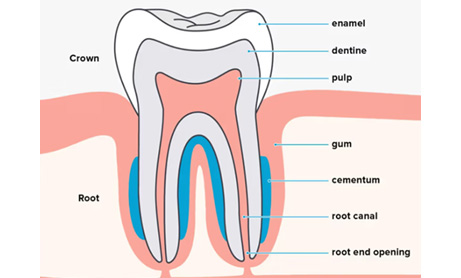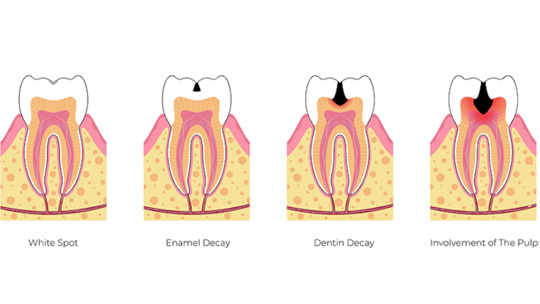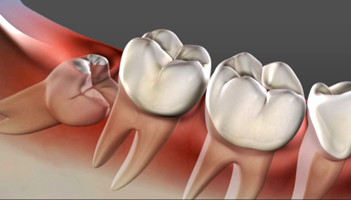‘A stitch in time saves nine’. This proverb means that the sooner you address an issue, the better it is. Most people have a tendency to ignore their teeth until they have unbearable pain. Even then, the option often chosen is to take a painkiller, and hope and pray that the pain settles. This may be due to fear of dental treatment, a busy schedule or sheer neglect. Irrespective of the reason, the more you postpone the treatment, the worse the issue gets. Read on to know the rationale behind this.
Tooth structure and decay progression

The tooth has a soft centre called pulp, which is filled with nerves and blood vessels. Needless to say, this is a very sensitive and delicate part of a tooth. The pulp is covered by a shell called dentin. Dentin is further covered by a hard layer of enamel.

Cavities always begin from the enamel and progress inwards towards the pulp. Thus, as the decay advances, the intensity of pain increases. The technical term for a tooth cavity is decay or caries.
Why cavities occur and spread
To understand this, let’s first understand how tooth infection works. There are millions of bacteria in our mouth. They are not harmful till they gain access to the inside of the tooth. Repeated acid attack resulting from the interaction between food left on the tooth surface and bacteria, dissolves the enamel layer, permitting the bacteria to enter the tooth. Once this protective barrier is breached, the bacteria rapidly proliferate inside the tooth and cause decay. This decay keeps spreading and involving more healthy tooth structure. The only way to save a decayed tooth is to remove the infected part and stop the remaining good tooth structure from getting affected. When the decay is limited to the hard part of the tooth, it can be easily cleaned and replaced with a filling.
However, if decay is not treated at this stage, it spreads further to the soft centre (pulp) of the tooth which is full of nerves and blood vessels. This is when a patient starts to have pain and sensitivity. Painkillers, clove oil, anti-sensitivity pastes at this stage only give temporary relief. Decay continues to erode more and more tooth structure and the pain keeps coming back. If still left untreated, the tooth is destroyed to the extent that it needs to be removed. Thus, the tooth which could have been easily saved, is lost
Stages of tooth decay and corresponding treatment

Stage 1 and 2 are when most people are unaware of cavities. These are diagnosed by a dentist and easily treated with a filling without any pain or anaesthesia. Stage 3 is when patient starts to experience sensitivity. At this stage, the cavity is deep but has not yet reached the pulp. A filling can be done under local anaesthesia. However, if the cavity is left untreated, it progresses to the pulp of the tooth. At this stage, just a filling is no longer a treatment option. Stages 4 and 5 are extremely painful. Stage 4 is a stage of acute pain. Painkillers give only partial and temporary relief. The only way to stop pain permanently is a root canal. This is when most people approach a dentist.
However, some still refuse to address the issue and manage with painkillers. They are unaware that while the pain may subside, the damage to the tooth continues. The tooth then develops a severe infection that spreads to the bone, resulting in an abscess. In some cases, the infection may spread in the jaw rapidly which can be life-threatening. A grossly decayed and infected tooth needs to be removed.
Conclusion
So, the only way to save teeth is to prevent them from decay or to minimise the damage by getting them treated at the earliest after discovering a decay. There are several advantages to addressing dental issues at the earliest such as:
- Less pain
- Fewer sittings
- Lower expenditure
- Conserving maximum tooth structure
Now, why would you want to endure pain, spend more time and money and possibly lose a tooth, when all it takes is visiting a dentist 6 monthly and getting minor issues fixed quickly.
A filling in time, saves pain and dime!









